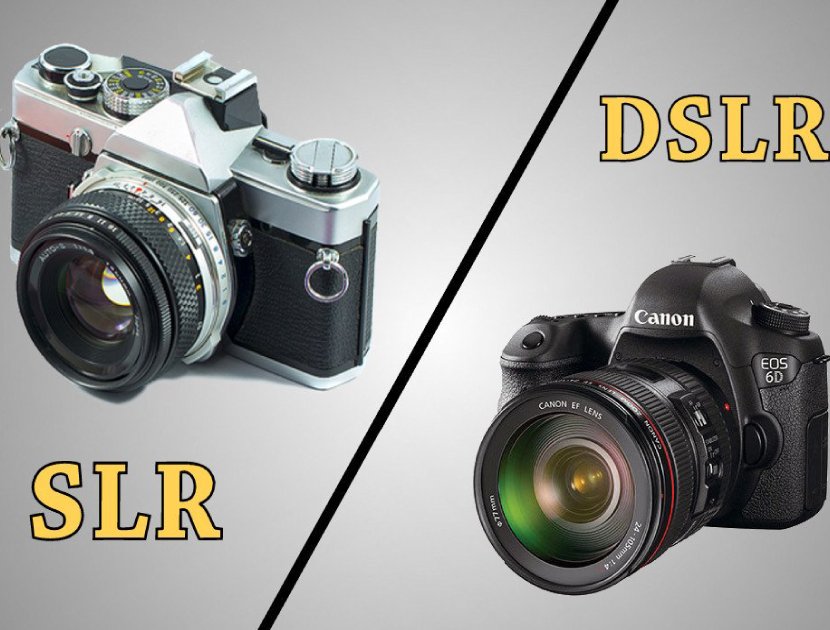Ever since the invention and commercialization of the first camera, the race for better and more eye-catching images has kept the technology improving for game-changing cameras. It was only a few years ago that aspiring photographers caught themselves at a crossroads of camera options. After point-and-shoot SLSR and DSLR cameras, they were offered the option of a Mirrorless Camera. So, what exactly is a mirrorless camera and how does it work?
To define it in the simplest way, mirrorless cameras, unlike their predecessors, do not have a mirror upon which light reflects to form a picture. To truly understand how a mirrorless camera works, let us look at what we already know to draw an in-depth comparison.
Principally, a camera is a device that records light information and creates an output that is called a photograph. In earlier times, the light was initially recorded on a chemically photosensitive strip of film used as the medium. With the progress of time, digital cameras completely erased the need for film cameras.
Contents
SLR and DSLR Cameras
SLRs are Single Lens Reflex cameras, whereas, DSLR stands for Digital Single Lens Reflex. At the core, the two types of cameras are essentially the same, yet at the same time, they are not interchangeable.

SLRs work on the basis of a mirror and pentaprism. Light enters the camera body directed to the mirror, inside which the light reflects upwards 90°. The pentaprism that receives the reflected light forces it to bounce at another perfect 90° angle, allowing the photographer to see the picture with a viewfinder. A viewfinder gives a general idea of the scene being captured, having no link with the lens itself. The mirror moves out of the way, exposing the film just as the shutter is depressed.
SLRs set the premise for DSLRs
The primary difference, as the name hints, is the “Digital” bit; which means instead of the actual roll film, the DSLR has a CCD or CMOS sensor that captures the image in a pixel format. CCD (Charged Coupled Device) and CMOS (Complementary Metal Oxide Semiconductor) sensors are two different imaging technologies. The image quality of CCD sensors surpasses the CMOS sensors’. However, CMOS sensors offer better power consumption and price. The camera processor takes the information from the image sensor and converts it into an appropriate digital format. The image is then written onto a memory card. Professional DSLRs can do this 11+ times in a single second, which makes it incomparable to the SLR.
The Genesis of the Mirrorless Camera
The first mirrorless camera rolled out back in 2004 by Epson. Though it was marketed as a rangefinder but it was based upon the same principle that today’s mirrorless cameras follow. By 2008, brands like Leica, Olympus, Fujifilm, Pentax, and Panasonic launched their own mirrorless cameras. In 2010, Sony released their own version.
How does a mirrorless camera work?
A mirrorless camera, in contrast to the DSLR, works without a reflex mirror. Light passes through the lens directly to the digital sensor, displaying an image on the LCD screen of the camera. This allows the photographer to not only preview your image before it’s shot but also adjust the settings to an optimized mode for the scene to be shot.
The mirrorless camera technology is simpler and more straightforward than the DSLR. Instead of using a mirror to bounce light to the viewfinder and sensor, in a mirrorless camera, the sensor is directly exposed to light. As a result, a live preview is generated on the viewfinder. When the shutter is depressed, a door slides up to cover the image sensor. Next, the door slides down, exposing the sensor to light. The sensor is covered once again with another door which stops exposure, which, in turn, enables the picture to be taken.
How to Use a Mirrorless Camera?
A photographer who has enough experience will find most of the features to be identical in the mirrorless camera. However, mirrorless cameras offer many more features and modes for a better photograph. For a complete guide to a mirrorless camera usage, check out this link.
How is a Mirrorless Camera different from a DSLR?
The differences are based on several properties of the two cameras. While some lie in favor of mirrorless cameras, others keep the DSLR cameras on top of the game. There is difference in the following:
- Weight: Mirrorless cameras are more compact and lightweight. DSLR cameras tend to be larger and bulkier, inconveniencing the photographer during lengthy events.
- Cost: DSLR cameras and mirrorless cameras have an overlapping range when it comes to price. A DSLR camera offers more value for the price, considering the accessories that it comes with, which is not the same in case of a mirrorless camera.
- Battery Life: A mirrorless camera’s electronic viewfinder takes quite some juice, draining battery power at almost twice the rate of a DSLR. Another reason for the lower battery time is owed to the compact size of the mirrorless camera; the smaller the camera, the smaller the battery it can accommodate.
- Accessories: Since mirrorless cameras are still in an early development phase, they do not support many accessories that DSLRs do.
- Shutter Speed: Shutter speed of a mirrorless camera is no match to most DSLR cameras, owing to simpler internal mechanics. This is especially true for burst photographs.
- Image Stabilization: Again, because of no moving mirror parts, the image is less shaky in mirrorless cameras.
- Noise: This is one of the main reasons professional photographers opt for mirrorless cameras. The lack of the mirror mechanism- which makes the ‘shutter noise’ in DSLR cameras- makes mirrorless ones quieter, making them appropriate for quieter events.
Benefits of a Mirrorless camera over any other in the market
Most mirrorless cameras feature an electronic viewfinder, creating the perfect preview of an image. Mirrorless cameras are smaller, lighter and more portable, especially for travel and sports photography as compared to their reflex counterparts. Mirrorless cameras are capable of fast continuous shooting and providing better video quality, with a better live view. Autofocus and beginner level mirrorless camera models often support 4K video shooting. These cameras also come with more scene modes and automatic settings than reflex cameras. Mirrorless cameras are comparatively easier to clean. There are no mirror parts that would let dust particles circulate inside the camera. The display in mirrorless cameras is much brighter since an Electronic Viewfinder is used instead of Optical Viewfinder.
Caring for a Mirrorless Camera
Even though mirrorless cameras come in sturdy bodies, the lens is a delicate part that needs extra care. It is also prone to collecting dust, so cleaning items with a microfiber cloth or an air blower will come handy. To reduce the lens flare from the sun, a lens hood can be installed. A UV filter can also be fitted on the camera’s original lens to protect it against dust, smears and also, a shield in case of rough handling and dropping of the camera. Camera straps and travel bags are also essentials that secure the camera while travelling.
Some top picks
-
Sony Alpha A7 III
Sony Alpha A7 offers excellent image quality and unrivalled performance. Some of the features to be noted include 693 – point AF system, 10fps burst shooting, uncropped 4K video, 15-stop dynamic range, 5-axis image stabilization and of course, all of this is packed in a compact and durable body.
Read the full review here.
-
Fujifilm X-T4
The flagship of Fujifilm offers a cutting edge 4K video performance, with 60p 10 – bit internal recording. Unlike its predecessors, it includes in-body stabilization, a vari-angle, and a fully articulated rear touchscreen. The 26 MP camera also offers 20 fps shooting with AF, 3.68M-dot OLED electronic viewfinder with up to 100 fps refresh rate, NP-W235 battery rated to give 500 shots per charge.
Read the full review here.
-
Nikon Z50
The Nikon Z50 was introduced in late 2019, following Nikon’s more advanced full-frame Z6 and Z models. This model is a good option for beginner level photographers. It features 20.9MP CMOS sensor, twin control dial interface, up to 11 fps shooting with AE/AF, 5 fps with live view, 4K video at up to 30p, 2.36M-dot OLED viewfinder with the option of Bluetooth enabled Wi-Fi.
Read the full review here.
-
Fujifilm X – T30
The first impression of the Fujifilm X – T30 might definitely be its small size. However, it can’t beat the fact that it still packs the second highest resolution APS-C sensor, rivalled only by the 32.5MP Canon EOS M6 Mark II. It also offers a highly sophisticated autofocus system. The 26.1MP camera also comes with the Hybrid AF system that has 425 phase – detect points spread across the entire frame. It allows burst shooting at 30 fps with no blackout, (but 1.25X) crop using electronic shutter; 20 fps without crop, 2.36M – dot OLED viewfinder w/0.62x equiv. magnification and 100 fps refresh rate in boost mode, and finally, 3″ tilting touchscreen display.
Read the full review here.
-
Nikon Z6
This all – rounder mirrorless camera combines a sound 24.5MP sensor with a super-sharp 3.69 million dot EVF plus 4K video. The Nikon Z6 offers a high-resolution EVF, 12fps burst shooting, 4K video capture and 5 – axis IS system. It also comes with an FTZ adapter which is either bundled with the camera or available separately, allowing to carry on using hundreds of F-mount lenses, with autofocus and auto-exposure maintained.
Read the full review here.
The Future of Mirrorless Cameras
As explained, with reflex cameras such as the DSLRs, the presence of the mirror adds to the complexity of the camera and its manufacturing cost. Not only does it make the camera bigger, but it also forces the design to become more complex, with additional optical and mechanical challenges, posing a risk of mechanical failure. This has cleared the path for mirrorless cameras to take over.
The future seems bright for mirrorless cameras since they are certainly better than DSLRs in many ways. There is also a market incentive for camera manufacturers that has the potential to convince photographers to switch to mirrorless cameras. This is owed to the fact that the market for DSLRs has plateaued. The DSLR image quality is not improving fast, particularly because of sensors peaking their physical limits. Mirrorless cameras hold a strong argument for an upgrade.


